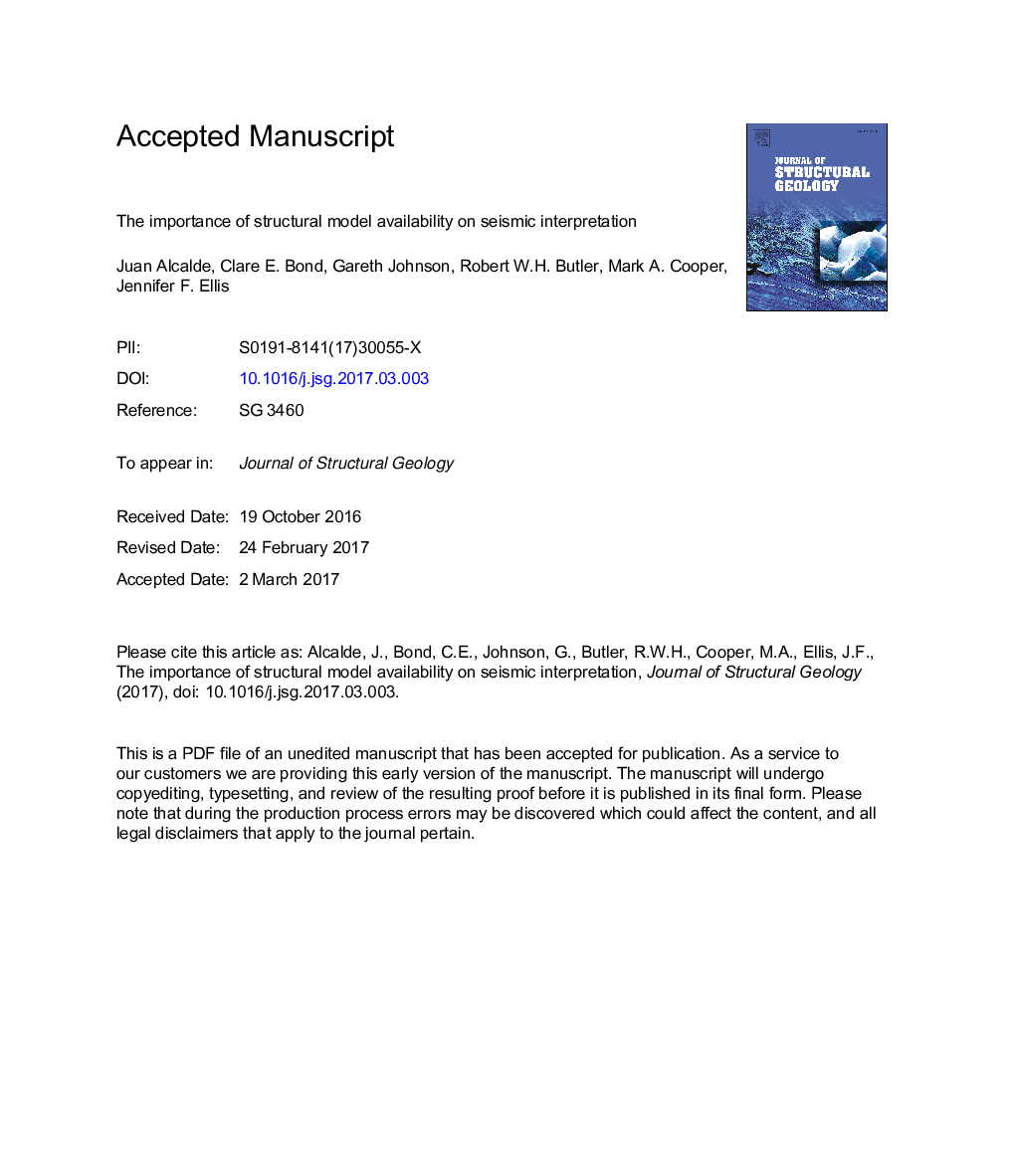| Article ID | Journal | Published Year | Pages | File Type |
|---|---|---|---|---|
| 5786344 | Journal of Structural Geology | 2017 | 30 Pages |
Abstract
Interpretation of faults in seismic images is central to the creation of geological models of the subsurface. The use of prior knowledge acquired through learning allows interpreters to move from singular observations to reasoned interpretations based on the conceptual models available to them. The amount and variety of fault examples available in textbooks, articles and training exercises is therefore likely to be a determinant factor in the interpreters' ability to interpret realistic fault geometries in seismic data. We analysed the differences in fault type and geometry interpreted in seismic data by students before and after completing a masters module in structural geology, and compared them to the characteristics of faults represented in the module and textbooks. We propose that the observed over-representation of normal-planar faults in early teaching materials influences the interpretation of data, making this fault type and geometry dominant in the pre-module interpretations. However, when the students were exposed to a greater range in fault models in the module, the range of fault type and geometry increased. This work explores the role of model availability in interpretation and advocates for the use of realistic fault models in training materials.
Related Topics
Physical Sciences and Engineering
Earth and Planetary Sciences
Geology
Authors
Juan Alcalde, Clare E. Bond, Gareth Johnson, Robert W.H. Butler, Mark A. Cooper, Jennifer F. Ellis,
